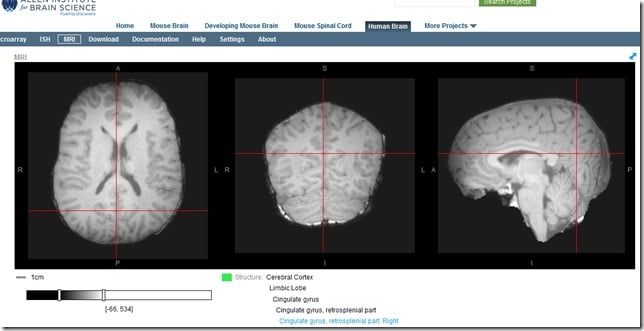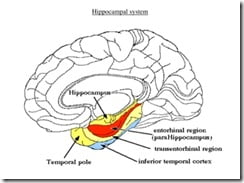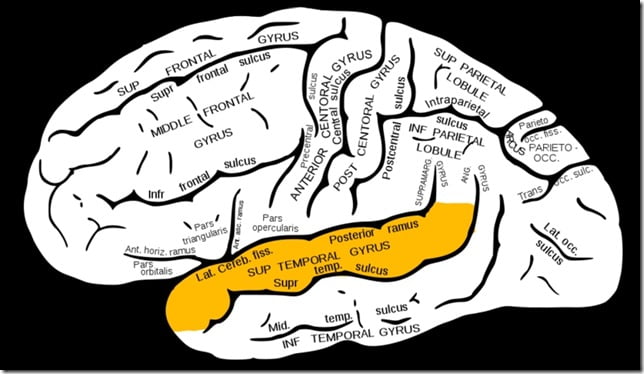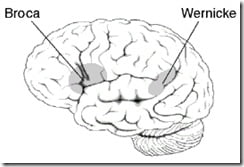Reading. Once you learn how to do it, the only thing you need worry about is what to read and when to find the time. Until a traumatic brain injury f* it up.
As I have discovered over the past few years, reading is a complicated process, mediated by several parts of the brain. It begins with the eyes. Your eyes see the letters on a page. They take that visual information and convert it to an electrical pulse, sending it to the visual cortex in the brain. But the brain does more than see letters and words; it also gives meaning to those letters and words. It processes them together as sentences and paragraphs and chapters to understand a greater meaning; it keeps track of each word read so that the big picture develops in your mind; it retains that big picture and slots details into it; it comprehends concepts and descriptions within that big picture; and it learns and retains the whole of it in the long term.
When I was injured, I had a SPECT scan, which showed abnormalities in the frontal, temporal, and parietal regions. The later MRI showed nothing (not surprising because it usually doesn’t after a certain period of time. A PET scan may have but I didn’t have a spare 3 grand). Somewhere in those injured areas lay the ones responsible for reading, but it was many years before I understood which and why.
In outpatient rehab, I worked with a speech language pathologist and occupational therapist on my reading. They didn’t say to me “this” is the reason for your difficulty, “this” being the injured area(s). Instead we spoke about compensating strategies to help me remember what I was reading. To say those strategies were an abject failure is an understatement. I hated reading a light mystery like I was studying for a university exam, with highlighting, taking notes, and so on, yet ending up remembering very little anyway. It’s a strange thing to be reading in the moment, with the past words lost and the future unfathomable. I gravitated toward series I knew already, no new learning or having to rely on a memory that worked poorly. When it took me a year to read and read again a simple book with diagrams, questions, and other ways to help the reader remember and learn from the text, and at the end of that year remembered nothing, I gave up. I continued to read because I always had, but I read only the advice column and simple mystery books, taking weeks to finish one. I read nothing else unless I had to (like e-mails, which I read and reread to ensure I was replying to what they’d written not to what I thought they had written).
It was only after I had a 19-point EEG done that I was told where the problems lay and why having trouble. Why I didn’t have an EEG done before and why physicians and therapists involved in the medical model of brain injury rehab ignore EEGs is beyond me. Sleep specialists with their years of medical training use EEGs quite effectively to diagnose sleep problems — and the computer software that interprets EEGs today is remarkable in how it analyses the data and even produce 3D models similar to MRIs and to a physical model.
Having the EEG done meant we could understand the problem on a physiological level, which is after all where the damage was done, not on a behavioural level, which was not the cause or issue. Yet behavioural is how the medical model deals with cognitive issues. I’m starting to get a bit annoyed with that. Let’s deal with the cause(s) to the best of our ability first and use behavioural as an adjunct, not the other way around or ignore the former altogether.
I’m going to get a little bit technical here and will be focusing on my specific issues. I won’t be talking about the actual ability to recognize letters and words. Most rehab places have that part down pat. For those of you with iPads, download the free 3D Brain app. It’s a pretty cool app that shows the large structures of the brain with easy-to-understand explanations of the function of each area and links to research.
Before I begin, I want you dear reader to understand that the brain is the final frontier, which means we know little about it. To make things tougher, not everyone agrees on current thinking about the brain. Nothing is absolute. Knowledge of each area is not set in stone yet. And anyone who claims that it is, is being disingenuous or closed-minded or plain stupid. By the way, some of the areas I discuss are also involved in emotional regulation and the role of emotions in memory formation, which is a whole other issue for me. But this post is about reading, about how I understand it to work, and will probably be subject to change as we learn more and more.
Getting the Information
Reading begins with being able to receive sensory input, in this case seeing, perceiving, and processing the words on the page. Since this post assumes you don’t have a damaged visual cortex and can see, that’s a much as I have to say on that.
Processing, Synthesizing, Retaining the Information
The brain takes that input, processes it, and puts it into memory. The posterior cingulate gyrus is hypothesized to synthesize and integrate sensory input and long-term memory. It is an important connection between working memory processing and long-term memory formation. It has heavy connections with the posterior parietal lobe, the dorsolateral prefrontal cortex and the parahippocampal cortex.
In other words, when you read you’re processing the words, putting them into working memory, and then into long-term memory. It’s like typing letters on a computer screen, having the software record the words, then eventually clicking that Save button. If you have reduced activity in this region due to an injury, you may be able to take in the words – see them on the page, perceive that they are words – but be unable to keep them in working memory and thence put them into long-term memory. Hence, the feeling of reading in the moment, not remembering what happened before. And if you can’t remember what happened before, you’re not building up a picture in your mind and so cannot predict what will come next: something mystery book readers like to do.
The parahippocampal gyrus on the right side is involved with attention and selecting what to key into short-term memory. Being on the right side, it’s a bit more visual. This area is not well understood and is being researched intensely after they discovered that it’s involved in memory processing, it may be involved with our personalities and experience, and perhaps spatial processing. If you do not or cannot filter everything you read, then the information is going to overload your brain, and it’s likely to just stop taking it in. This is what happens to me: I see the words, but my eyes skip around the page looking for something easier to take in as the words “feel” overwhelming. That’s usually my cue to stop reading. Of course, half the time I ignore it, which is just dumb as it leads to frustration and a headache. Being able to selectively key in on what you need to know keeps the information flowing and is an efficient way to process and retain.
Broca’s Area 31 sounds a bit sci-fi’sh, but it may be involved in synthesizing and integrating incoming information. It’s usually well known for fluid speech production and a certain kind of aphasia after injury. But some research suggests that it’s also involved in visual speech perception (taking in of speech, not producing it; I wonder if this is why I need to see a person’s mouth to be able to easily understand them??) and in the processing of lexical, grammatical, and phonological aspects of language. What does this mean? Haven’t a clue other than it’s involved in language processing, which is important when reading.
Superior temporal gyrus on the left is involved in auditory processing and co-ordination with Broca’s Area 31. It connects to the limbic system (hippocampus and amygdala), the thalamus, and neocortical association areas in the prefrontal cortex. Again no clue what that means. But damage here could account for the fact that I cannot read aloud what I write. The sound of my voice interferes with comprehension. Reading aloud is important to writers because it’s how you can hear if dialogue works and your work sounds fine.
Brodmann’s Areas 23 and 24, the latter in the anterior cingulate is involved in selective attention (as well as modulation of affect — emotion). Unless you can focus on the task at hand, it’s difficult to do it. It’s difficult to read if you’re easily distracted; it’s difficult to remember and to learn if your brain can’t distinguish between important and unimportant stimuli and doesn’t know to focus only on the important stuff.
Wernicke’s Area has been traditionally viewed as being involved in spoken language. But recent research shows that it’s involved in processing language, whether spoken or signed. In my case, the experts couldn’t agree on whether it’s involved in my reading issues or not.
And then there are the Frontal Lobes, including the prefrontal cortex with its crucial role in executive function: initiation, planning, organizing, and apparently reading. The frontal lobes are a complicated piece of machinery that do all sorts of reading-related stuff.
There’s the big picture issue. Alpha waves open up your awareness. You need open awareness in reading just as much as navigating the street without bumping into a squirrel. Without the big picture, it’s hard to see and thus understand and retain the concepts in a book, or even a plotline. I don’t know which specific areas need to produce those alpha waves to see the big picture.
There’s the attention issue. The frontal lobes may be involved in paying attention (other areas are involved in attention too). Without attention, there’s no way anything’s going in. Just ask someone with ADD. You need to be able to focus and stay focused on the words at hand in order to remember them and understand their meaning.
Thinking. When you read, you’re thinking. You’re thinking about what’s happening or about the ideas the writer is positing. You’re synthesizing the new information with old information. You’re integrating the two or tossing out some of the old or keeping only some of the new. This is all active. Takes energy.
There’s initiation deficit. If you have no initiation, you may want to read, think about reading, but the Go button is off, and so you do not read. This is why getting the iPad has increased my reading (and mental fatigue!). There are all sorts of cues – Go buttons – from people tweeting links to articles, to apps that make it easier to Flickr (which involves reading comments and descriptions on photos), to apps that make it easier to read Facebook links. When the reading material is brought to you, as opposed to you having to go get it, it’s much easier to get going and read. Other cues could be like the kind that increase people’s desire to smoke: I’m having coffee, so it must be time to read. But that kind of cue is either pre-existing or built up over time.
Lastly, it’s hard to read if all these different areas don’t talk to each other. As you may have gathered, all these areas I’ve discussed either connect directly or indirectly to each other. It’s like following a light pulse from your eyes down your optic nerve to the visual cortex at the back and then from the back of the brain, not quite in a direct line, to the front of the brain. Each part does its own thing but must talk to the other parts for reading to happen correctly.
Coherence is about how each area of the brain works independently from the others, how each area does its own thing, yet each also talks to the others to create an efficient, effective working human being. A brain whose areas all do the same thing is a slow brain that works with effort. An injured brain may become too coherent and not retain that fine balance between independence and interdependence. When it comes to reading, too much coherence may lead to areas not communicating with each other and with the back of the brain which takes in sensory input. It is inefficient and uses up way more energy.
One more thing: closed head injury results in reduced blood flow in the brain. We’re beginning to know that reduced blood flow leads to fatigue and fatigue makes doing anything harder. Think about making dinner. You may not like cooking but when you’re chipper, energetic, perky, you get right to it. But when you’re tired, dragged out, the idea of lifting a pot is anathema. You reach for that takeout menu. Similarly, fatigue, an ever-present problem after brain injury, interferes with all cognitive functions, especially complicated effort-full ones like reading.
So that’s what I’ve learnt so far about the physiological aspects of reading and which injured areas can affect it. My learning really began back in university when I studied neurophysiology as part of my psychology degree. Since my brain injury in 2000, most of the people who’ve worked with me have taken the time to explain things, and I took notes. Not very good ones until after the brain biofeedback, mind you! I heard, read, and experienced the same information over and over these past 10 years, while also learning something new each year. And Google comes in handy to find the information I remembered or had noted down in forms that I can link to. I wrote this partly to help cement into my mind all that I’ve learnt and mostly to help anyone else who’s having trouble reading since their injury and can’t understand why.
Next: Treating and Compensating for Reading Problems







